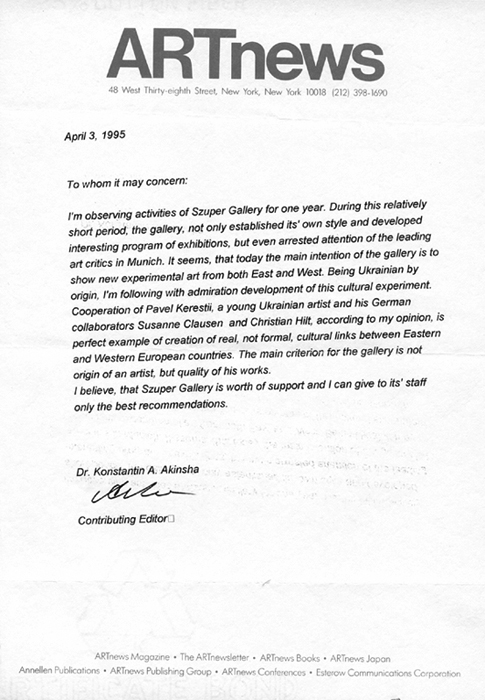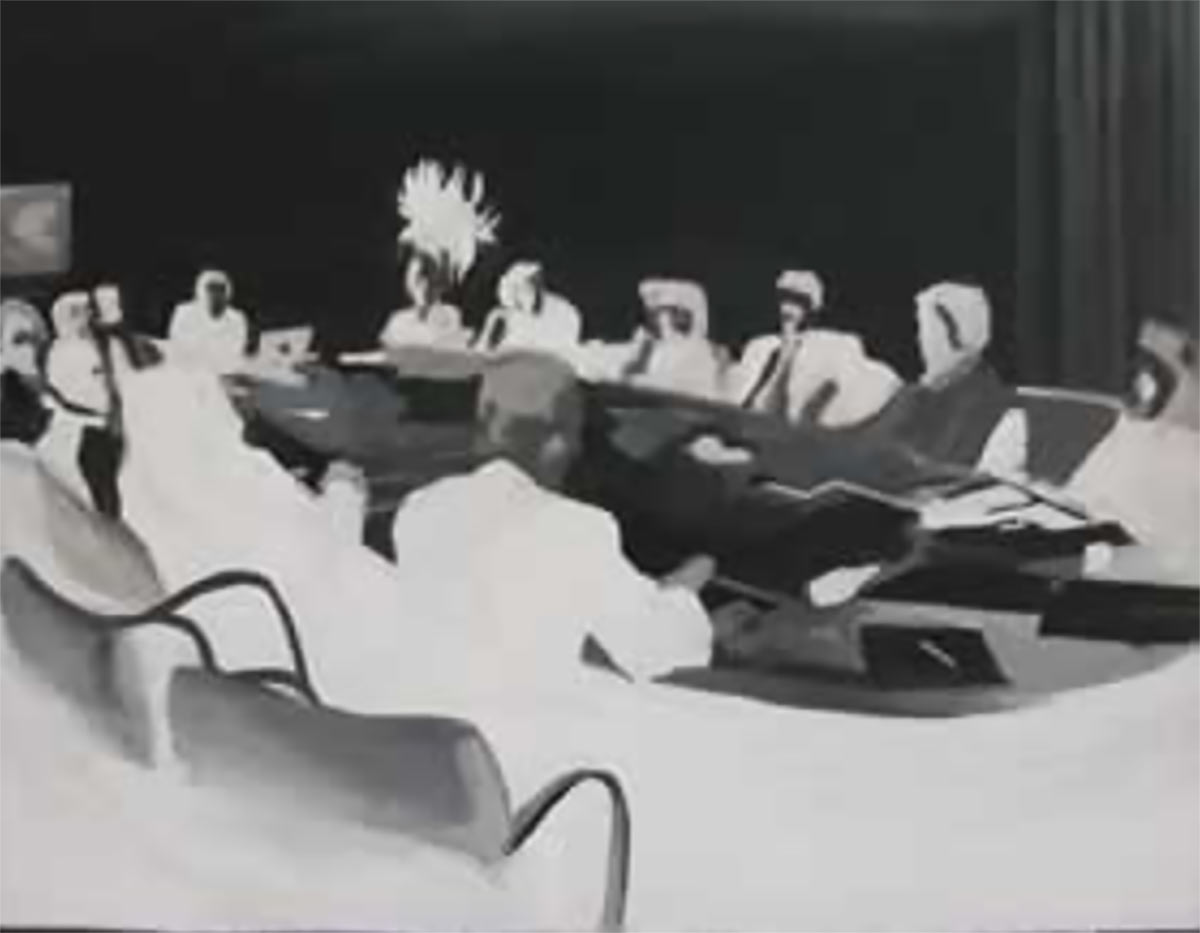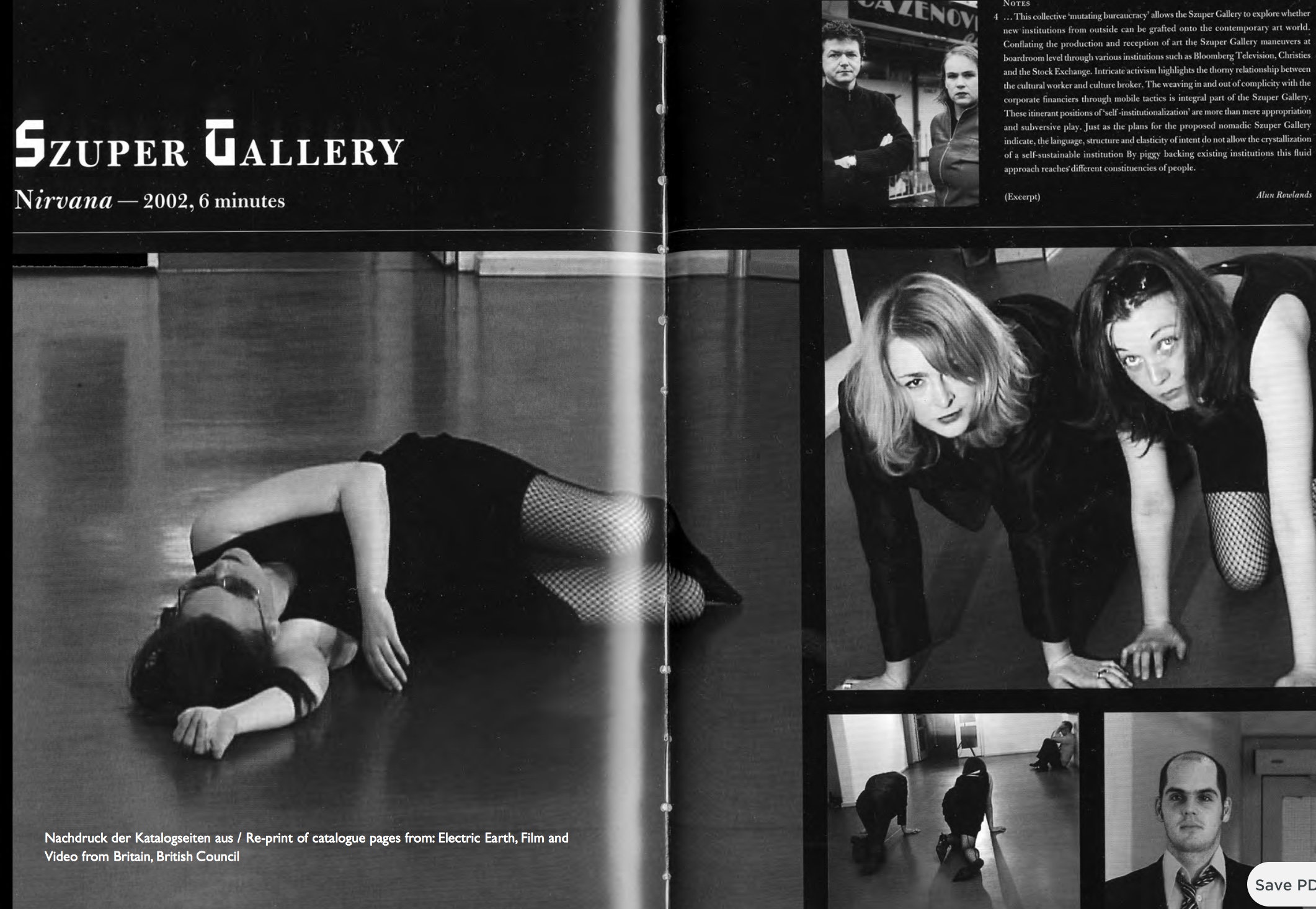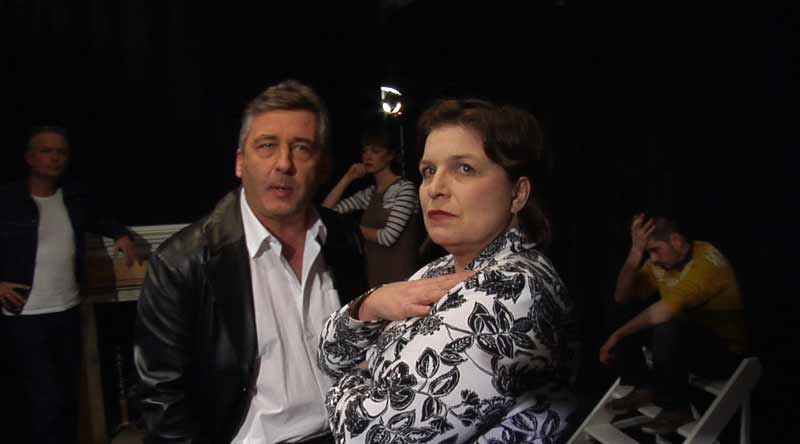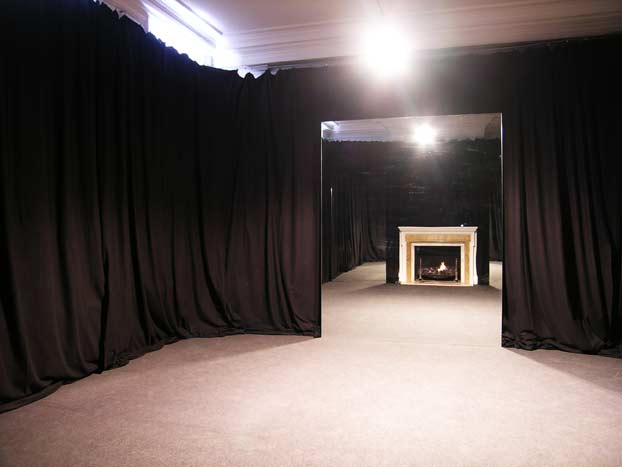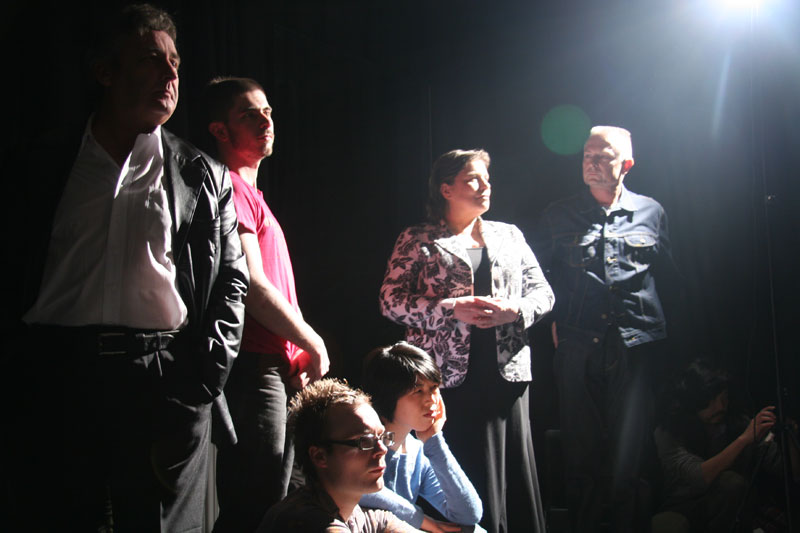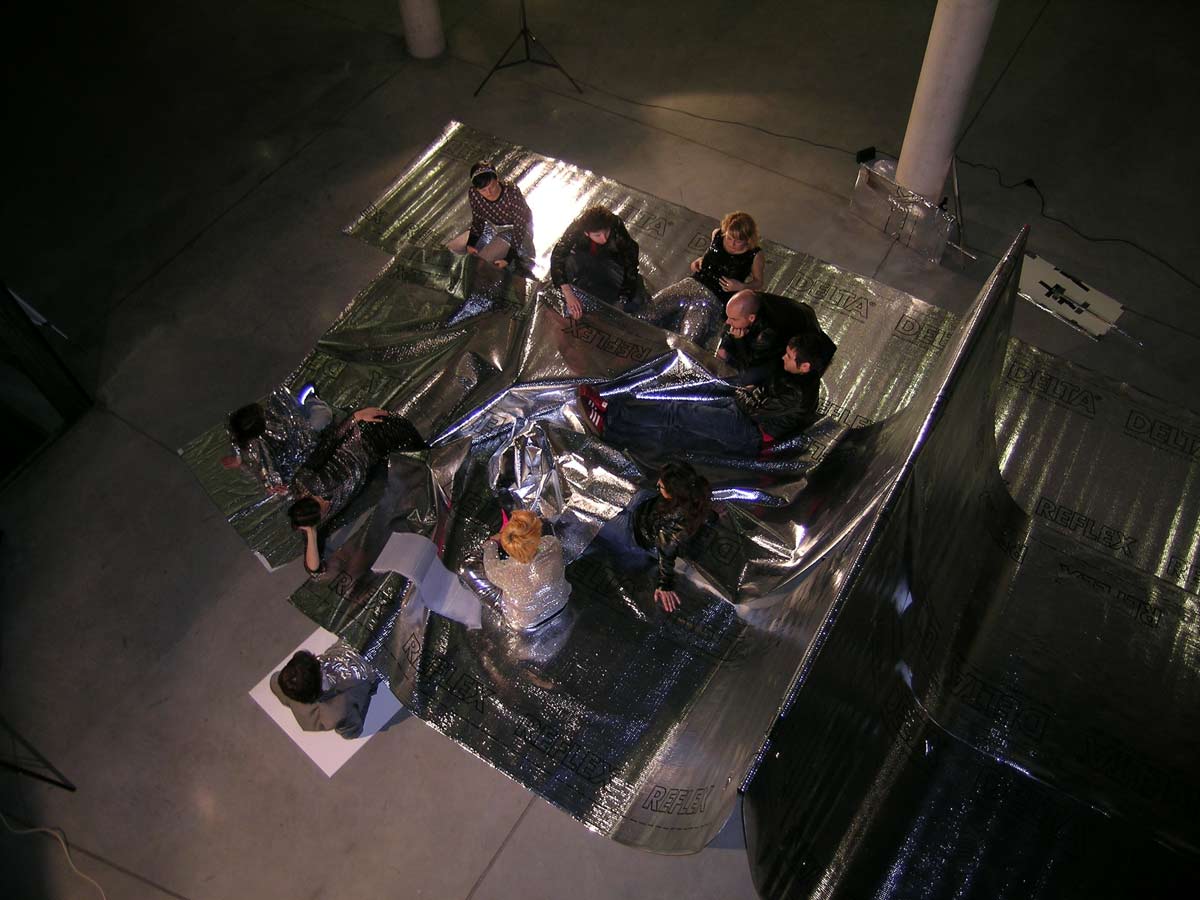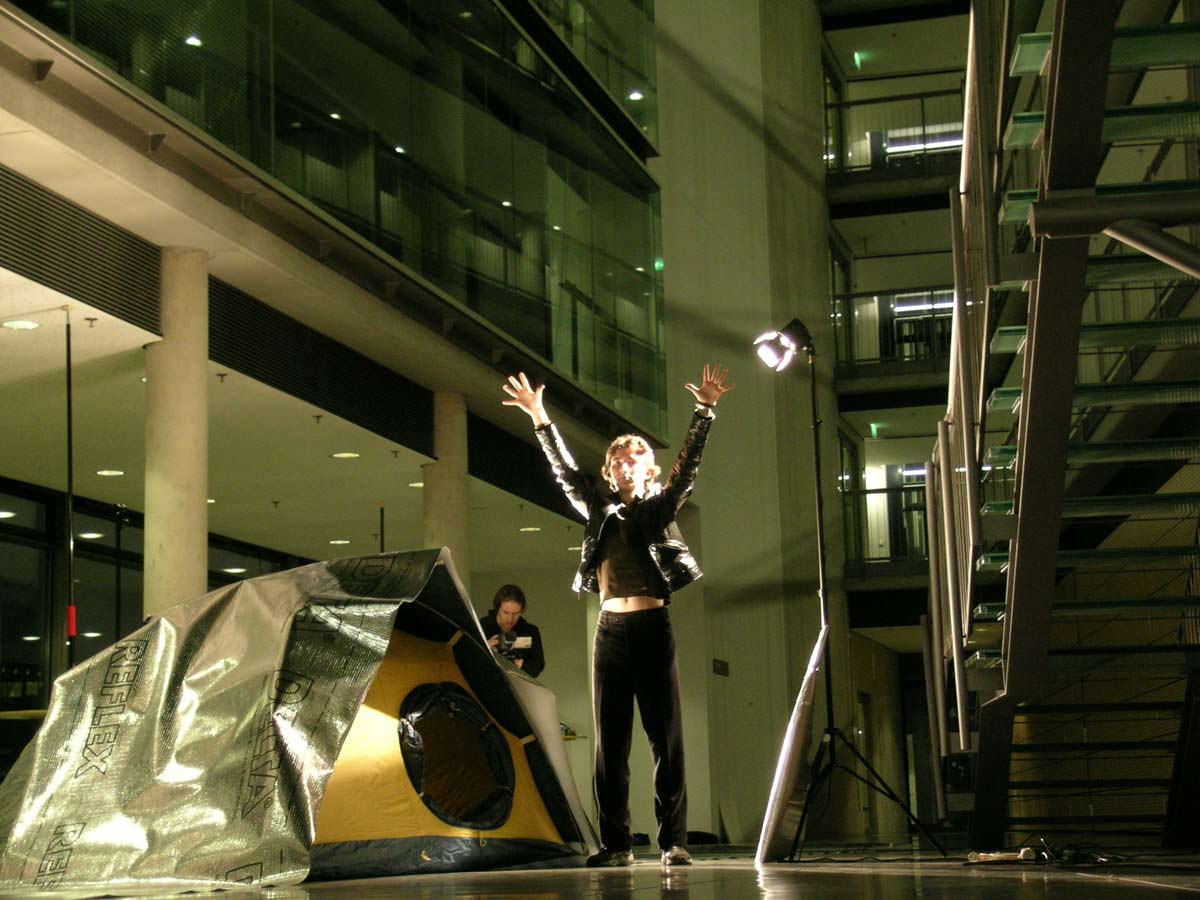Szuper Gallery began in Munich as a platform for
collaborative exchanges between Ukrainian and German artists, quickly evolving
into a tool for exploring themes of presence and absence, as well as the role
of artists within public and institutional spaces. Operating as a
“performative” gallery, it engaged with the commercial gallery model while
simultaneously attempting to subvert its processes. Partially funded by private
money from its Ukrainian-born owner—a businessperson with opaque financial
backing—the gallery’s operations were marked by a lack of transparency around
its funding sources.
Over several years, Szuper Gallery faced challenges beyond its artistic mission. Our team had to navigate complex issues around visas, travel, and immigration for our collaborators, while grappling with the uncertainty of what we suspected were dubious financial origins. We frequently moved between Kyiv, Munich, and London, working within a shifting and politically charged landscape. Eventually, the gallery's owner came under scrutiny from authorities, leading to a police investigation. Following on from this period, we were commissioned by Munich’s Quivid public art program to create a large-scale public art project for the Munich Immigration Office, located at the Kreisverwaltungsreferat on Poccistrasse.
Liftarchiv
The resulting project took the form of a glass container, installed in the entrance hall of the Munich Immigration Office. Unlike most 'Kunst-am-Bau' projects, which are typically static, the Liftarchiv featured a dynamic archive that moved up and down like an elevator. This mobile archive became a platform for rotating exhibitions, installations, and video presentations, serving as both a performance and exhibition space within the immigration office from 2001 to 2004.
Throughout its run, the Liftarchiv hosted site-specific collaborations with over 20 artists, each contributing to a collective reflection on the meaning of immigration within the context of art. The project sparked moments of controversy, raising questions about the intersection of bureaucracy, migration, and artistic expression. While the performances and exhibitions concluded in 2004, the archive itself remained onsite and accessible until 2020.
See Link to PDF publication
Circus Artists, 2000
The conversations, publications, and broader discourse surrounding themes of migration, relocation, and our own immigration status became integral to the project. We often felt as though we were pushing against the boundaries of institutional structures. This tension was exemplified in our video Circus Artist Under the Big Top – Clueless, filmed at Munich's Baureferat, which drew inspiration from Alexander Kluge’s film of the same name. Kluge’s work examines the conditions of exile, escape, and retreat, using the circus as a metaphor for the attempts and ultimate failures of the 68 protest movement. In our version, the circus became a fitting symbol for the precarious balance between navigating institutional frameworks and addressing the complex realities of migration and displacement.
The Extras, 2001
Our performance at the Munich Baureferat (Buildings Department) mimicked the gestures of planning and plotting, transforming them into a choreography of institutional, yet seemingly aimless, movements. The performers took on the roles of extras on a film set, embodying the mundane routines of bureaucratic processes. These collaborations and our negotiations with various institutions—those that regulate entry and exit across different domains—became central to our work. We explored a range of performative modes to reflect on these institutional structures, using performance as a way to critique and reveal the complexities of navigating systems of control, immigration, and regulation.
Rehearsing Szuper Gallery, 2005
We found ourselves in a continuous loop of rehearsing how to integrate into the art world and its systems. For the exhibition Xenopolis at Munich’s Rathaus Galerie, curated by Pia Lanzinger, we staged an interview with ourselves, but instead of appearing directly, we commissioned two actors to impersonate us, imagining us as fictional characters. In Rehearsing Szuper Gallery, the actors retold the "background story" of the gallery, including its rumored ties to the Ukrainian mafia.
In the video, Ukrainian actors Yuri Rosstalnyi andArthur Galiandin reenacted our roles, while also infusing their performances with their own experiences as foreign actors living in Germany. Their portrayal blended fiction and reality, with improvisation blurring the lines between personal narrative and artistic invention. The staged discussion raised important questions about what it means to be an artist and a foreigner working in exile, while also reflecting on the reception of Ukraine in the 2000s.
Work, Arbeit, Rabota, 2007
As a collaborative project, we moved between different contexts and cities, and it became evident that hearsay, gossip, and stories were part of the fabric we constantly had to navigate. These informal narratives, often outside our control, influenced perceptions of the project.
During this time, we srarted working in London, adding another layer of complexity to the work. The shift in context introduced new challenges, further entangling our practice with questions of mobility, migration, and the ongoing negotiation of identity across different cultural and institutional landscapes.
In 2007, Shezad Dawood invited us to collaborate on staging an artist studio in a residential apartment in London’s Knightsbridge. We decided to transform the apartment into a recording studio, further exploring the theme of storytelling. Working with a group of artist friends as performers, all of whom had personal histories of immigration to London (from Russia, Ukraine, South Korea, Sweden, and Wales), we performed Arbeit/Rabota.
For the exhibition, we divided the apartment: the lower level became a dark, mirrored studio/living space, while the upper level was configured as a light-filled gallery. The video evolves as the performers navigate and inhabit the plush Knightsbridge setting, rehearsing for an interview that deconstructs the very process of performing. The focus shifted to entrances, rehearsals, the documentation process, the set, and the mechanics of the space—highlighting repetition, looping, re-enactment, awkwardness, and delay. The work emphasized notions of time and how artistic practice and experience are constructed, calling attention to the often unseen labor behind the scenes.
The Extras Vancouver, 2005
The Extras, was created for Western Front and a performance art biennale in Vancouver, in which we staged a protest in the city’s central library. The video embodies the ambiguous role of the Extras: they are extra but necessary; they have to be there without being present. Extras are brought to the scene in mid-story, and they do not know the storyline or understand the meaning of their own actions. In the long and often boring shooting sessions their work is mainly waiting and killing time, but that also allows them to think their own thoughts and alternative interpretations. The ambivalence is also evident in the video soundtrack as collective thoughts in the first person plural. Szuper Gallery’s work is characterized by this kind of vacillation between individualism and collectivism, anonymity and standing out, outsiderness and belonging. Their works contemplate intermediate spaces, being an extra and an outsider, the dynamics of groups and money and the intangibility of human existence and action.
Over several years, Szuper Gallery faced challenges beyond its artistic mission. Our team had to navigate complex issues around visas, travel, and immigration for our collaborators, while grappling with the uncertainty of what we suspected were dubious financial origins. We frequently moved between Kyiv, Munich, and London, working within a shifting and politically charged landscape. Eventually, the gallery's owner came under scrutiny from authorities, leading to a police investigation. Following on from this period, we were commissioned by Munich’s Quivid public art program to create a large-scale public art project for the Munich Immigration Office, located at the Kreisverwaltungsreferat on Poccistrasse.
Liftarchiv
The resulting project took the form of a glass container, installed in the entrance hall of the Munich Immigration Office. Unlike most 'Kunst-am-Bau' projects, which are typically static, the Liftarchiv featured a dynamic archive that moved up and down like an elevator. This mobile archive became a platform for rotating exhibitions, installations, and video presentations, serving as both a performance and exhibition space within the immigration office from 2001 to 2004.
Throughout its run, the Liftarchiv hosted site-specific collaborations with over 20 artists, each contributing to a collective reflection on the meaning of immigration within the context of art. The project sparked moments of controversy, raising questions about the intersection of bureaucracy, migration, and artistic expression. While the performances and exhibitions concluded in 2004, the archive itself remained onsite and accessible until 2020.
See Link to PDF publication
Circus Artists, 2000
The conversations, publications, and broader discourse surrounding themes of migration, relocation, and our own immigration status became integral to the project. We often felt as though we were pushing against the boundaries of institutional structures. This tension was exemplified in our video Circus Artist Under the Big Top – Clueless, filmed at Munich's Baureferat, which drew inspiration from Alexander Kluge’s film of the same name. Kluge’s work examines the conditions of exile, escape, and retreat, using the circus as a metaphor for the attempts and ultimate failures of the 68 protest movement. In our version, the circus became a fitting symbol for the precarious balance between navigating institutional frameworks and addressing the complex realities of migration and displacement.
The Extras, 2001
Our performance at the Munich Baureferat (Buildings Department) mimicked the gestures of planning and plotting, transforming them into a choreography of institutional, yet seemingly aimless, movements. The performers took on the roles of extras on a film set, embodying the mundane routines of bureaucratic processes. These collaborations and our negotiations with various institutions—those that regulate entry and exit across different domains—became central to our work. We explored a range of performative modes to reflect on these institutional structures, using performance as a way to critique and reveal the complexities of navigating systems of control, immigration, and regulation.
Rehearsing Szuper Gallery, 2005
We found ourselves in a continuous loop of rehearsing how to integrate into the art world and its systems. For the exhibition Xenopolis at Munich’s Rathaus Galerie, curated by Pia Lanzinger, we staged an interview with ourselves, but instead of appearing directly, we commissioned two actors to impersonate us, imagining us as fictional characters. In Rehearsing Szuper Gallery, the actors retold the "background story" of the gallery, including its rumored ties to the Ukrainian mafia.
In the video, Ukrainian actors Yuri Rosstalnyi andArthur Galiandin reenacted our roles, while also infusing their performances with their own experiences as foreign actors living in Germany. Their portrayal blended fiction and reality, with improvisation blurring the lines between personal narrative and artistic invention. The staged discussion raised important questions about what it means to be an artist and a foreigner working in exile, while also reflecting on the reception of Ukraine in the 2000s.
Work, Arbeit, Rabota, 2007
As a collaborative project, we moved between different contexts and cities, and it became evident that hearsay, gossip, and stories were part of the fabric we constantly had to navigate. These informal narratives, often outside our control, influenced perceptions of the project.
During this time, we srarted working in London, adding another layer of complexity to the work. The shift in context introduced new challenges, further entangling our practice with questions of mobility, migration, and the ongoing negotiation of identity across different cultural and institutional landscapes.
In 2007, Shezad Dawood invited us to collaborate on staging an artist studio in a residential apartment in London’s Knightsbridge. We decided to transform the apartment into a recording studio, further exploring the theme of storytelling. Working with a group of artist friends as performers, all of whom had personal histories of immigration to London (from Russia, Ukraine, South Korea, Sweden, and Wales), we performed Arbeit/Rabota.
For the exhibition, we divided the apartment: the lower level became a dark, mirrored studio/living space, while the upper level was configured as a light-filled gallery. The video evolves as the performers navigate and inhabit the plush Knightsbridge setting, rehearsing for an interview that deconstructs the very process of performing. The focus shifted to entrances, rehearsals, the documentation process, the set, and the mechanics of the space—highlighting repetition, looping, re-enactment, awkwardness, and delay. The work emphasized notions of time and how artistic practice and experience are constructed, calling attention to the often unseen labor behind the scenes.
The Extras Vancouver, 2005
The Extras, was created for Western Front and a performance art biennale in Vancouver, in which we staged a protest in the city’s central library. The video embodies the ambiguous role of the Extras: they are extra but necessary; they have to be there without being present. Extras are brought to the scene in mid-story, and they do not know the storyline or understand the meaning of their own actions. In the long and often boring shooting sessions their work is mainly waiting and killing time, but that also allows them to think their own thoughts and alternative interpretations. The ambivalence is also evident in the video soundtrack as collective thoughts in the first person plural. Szuper Gallery’s work is characterized by this kind of vacillation between individualism and collectivism, anonymity and standing out, outsiderness and belonging. Their works contemplate intermediate spaces, being an extra and an outsider, the dynamics of groups and money and the intangibility of human existence and action.

